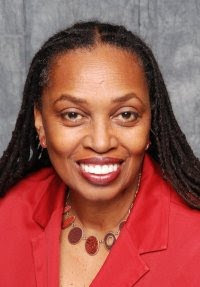Two recent posts at the Business Law Prof Blog address the issue of financial literacy among law students and the alarming level of incompetence among regulators. The first post concerned Mark Klock’s recent article Lessons Learned from Bernard Madoff: Why We Should Partially Privatize the Barney Fifes at the SEC the abstract of which on SSRN says:
Financial markets do not function well when fraud is pervasive. Around September of 2009, the investigations into the SEC examinations of Bernard Madoff Investment Securities, LLC were completed and released to the public. The simple facts reveal an alarming level of incompetence and lack of financial literacy on the part of the guardians of the integrity of our financial markets. I suggest two important tools for addressing these problems. One is to supplement enforcement of anti-fraud rules with more private attorney generals by expressly creating a private right of action for aiding and abetting violations of securities laws. This will foster a stronger culture of integrity and ethical conduct in the auditing profession. An additional tool is to increase financial literacy in our law schools which supply the regulators of our markets.
The second post entitled The SEC and Hiring expresses dismay at the slavish devotion to formality exhibited by the agency’s human resources department. The post is worth quoting at length:
To wit, today’s law students – regardless of passion for the subject or practical experience – are keenly aware that the Commission (just like any large law firm) shall be predictably seeking to hire the top of the law school class. This lemmings approach to filtering applicants leads the SEC to the very same students who win the beauty pageant of grades that commences around Christmas of the first year of law school and ceases sometime near retirement. Inevitably, such forerunners are, at best, anticipating a brief “training period” employment with the Commission or, at worst, gobbled up by the largest Wall Street employers halfway through interview season.
Each semester I encounter students who, despite acumen and desire, lose out to the simplistic approach of an agency that, despite a perennial wealth of applicants, seems to get outmaneuvered by market players each decade. Without fail, a number of students in courses like Securities Regulation and Corporate Finance evidence a practical utility and an earnest hope to work for a regulator (e.g., the former hedge fund trader willing to explain the real value in a real time stock ticker; the former State examiner who’s interviewed 100+ investors; the economics major who can readily distinguish between the boilerplate of a 10Q and a 10K; the part-time student who’s worked in a stock loan department). In fairness to the Commission, the Regional Offices outside of New York and Washington D.C. do seem more willing to value work experience and a corporate course load over high scores in Torts and Contracts. But in those two largest offices, the message is clear: Third year students ranked high in the class of a top law school shall be given the most serious consideration (and likely stand the only realistic chance at something called “The SEC Honors Program”).
It may very well take stalwart leadership, a generation of creativity, and unfettered funding to completely reform the Commission. But a large step towards it regaining composure can be made in a year by simply redirecting the hiring process to favor experience and desire over scores on tests gauging a first year law student’s knowledge of generalized legal concepts. Stated bluntly: Lighten up SEC, and give the students with focused skills a chance.
An April article from AmLaw Daily entitled And Now for Something Completely Different: The Future of Legal Education addressed the need for more “skill development” in law schools during the current economic downturn, as businesses are “not going to pay for people who can’t add value.” The article noted that most law schools do not teach lawyers such practical business management skills as financial literacy and effective executive communication.

 The flight delays had an impact on this side of the Atlantic for the original manuscript of Magna Carta on display at the Morgan Library & Museum. This important document came to New York for a special event for Oxford University but the volcanic ash cloud delayed its return to Britain. The
The flight delays had an impact on this side of the Atlantic for the original manuscript of Magna Carta on display at the Morgan Library & Museum. This important document came to New York for a special event for Oxford University but the volcanic ash cloud delayed its return to Britain. The 


 News reports feature two distinguished Brooklyn Law School graduates being appointed to prominent positions. ArtDaily.org has an
News reports feature two distinguished Brooklyn Law School graduates being appointed to prominent positions. ArtDaily.org has an  A
A  For more on the topic of child sexual abuse by clergy, the Brooklyn Law School Library has in its collection
For more on the topic of child sexual abuse by clergy, the Brooklyn Law School Library has in its collection  The Library recently added to its collection
The Library recently added to its collection